I survey HIStalk readers each year right around HIMSS conference time, soliciting feedback and ideas for both the short and long term. I appreciate every comment and find them valuable, especially since as an anonymous spare-bedroom writer I don’t get the chance to receive feedback in other ways.
My readership is diverse, so it’s hard to please everyone, and even if I did, and the result would be so bland that nobody would be reading anyway. I also realize that my readers are self-selected and keep coming back because they get something out of HIStalk, so I favor incremental change that can improve their experience rather than major changes that would be disruptive for readers and for me.
Each year’s survey has many responses that give me a warning of the “if it ain’t broke” variety. In fact, that is always the most common response by far.
Thanks to the 520 readers who responded. One randomly chosen of those readers won a $50 Amazon gift card, which he or she has asked me to donate to DonorsChoose. I’ll report shortly how I spent the money.
I have a few to-do’s from the comments below. I’ve also asked Lorre to review for action items since she can be more objective than I.
The TL;DR Summary of To-Do’s
- Investigate creating a subreddit for extending the discussion without having to take on user management myself.
- Redesign the bulk email that indicates when I’ve published something new.
- Consider summarizing the top news items in the email update like I used to do.
- Try to recruit some new contributors, especially from the provider front lines (CIO, CMIO, CISO, etc.)
- Consider whether HIStalkapalooza could be restored in a simpler form.
- Think about whether I should try harder to get new readers, especially those newer to the industry, via some sort of marketing.
- Consider writing longer-form pieces such as editorials.
Respondent Characteristics

- 81 percent of readers have worked in the industry for at least 10 years
- 26 percent work for a provider organization
- 7 percent are CIOs, 2 percent CMIOs, and 7 percent CEOs
- 25 percent have provider purchasing influence of at least $10,000
- 83 percent say they have a higher appreciation for companies that they read about in HIStalk
- 41 percent say they have a higher appreciation for companies that sponsor HIStalk
- 89 percent say reading HIStalk helped them perform their job better in 2018 (this is the statistic I care most about)
What Features Readers Like Most
The scored, weighted results give the top items in order as:
- News
- Humor
- Headlines
- Rumors
Suggested Changes
I should first say that every year’s survey contains one overwhelmingly prevalent response – don’t change anything. I’m open to ideas, but I also know that most readers who keep coming back like things just as they are. I have to resist the urge every year to change things just because someone suggested it.
Try to say something more productive about companies, especially startups.
I give an honest opinion based on what I see as an industry everyman. It isn’t always analytical, but I always check a company’s website, interviews, leadership, etc. before I comment (assuming I don’t already know that company). I think I say positive things when I like the product or marketing approach.
Parts I like, some I am indifferent to, navigating around them is easy.
You’ve neatly explained how I try to give everyone something they can use. Not everybody cares about sponsor updates, people moves, reader comments, etc. and I make it easy to skip those sections. I run the sponsor updates at the bottom of the page as a courtesy, but everything else on the page is something I thought interesting enough to mention. I have no incentive to pad out a given day’s news post with something I don’t think is useful. I try to earn reader trust that I won’t waste their time.
Explore an alternative website format to keep it fresh and in line with current website formats. A refresh every 2-3 years would be nice.
I’ve always waffled on doing this because it wouldn’t change the content, just the presentation, and I hope readers aren’t fickle enough to read or not based on initial appearance. Politics aside, Drudge Report is the ugliest website in the world, yet one of its busiest, because people want to read the content and have become comforted that the site will always look the exact same.
Write less about start-up financing.
I eliminated announcements involving funding of less than several million dollars, thinking that those companies that receive bigger investments are worthy of mention because they are likely to be up-and-comers, and to skip announcements of companies whose product isn’t purely health IT related.
You are jaded and paint every topic with your negative bias. Sometimes things aren’t as negative as you might think.
I admit that having been in the industry for a long time, I’m skeptical and sometimes cynical and my opinions reflect that. But I’ll also say that one of the reasons I started HIStalk was because the cluelessly cheery publications and websites didn’t reflect reality and I offered an alternative. I should make a sign for my desk reminding me to be more positive.
Add more commentary.
I’m challenged here because some readers want straight news and no commentary. I also don’t claim to be an expert in everything and therefore hesitate to provide what might be a poorly informed pinion. But I will consider the options.
Put the news bullets in the email update without requiring a click to see it on the website.
My goal isn’t to send out yet another industry newsletter that nobody reads. I can’t squeeze the dozens of items contained in a typical HIStalk post into an email and I’ve already culled out the 95 percent of items that aren’t worth running. I post everything in aggregated form, so all the links are going to take you to the same page anyway – I don’t write separate posts for each news item because that would be a flood of individual stories. I understand the argument that, “Maybe I won’t bother clicking over to the website if nothing sounds interesting,” but I’m willing to lose readers who find that onerous since I’m not doing them a favor by dumbing down the teaser. The thrice-weekly news posts are either worth 15 total minutes of your time each week to skim or they aren’t.
Seek out more rumors. I started reading HIStalk to find about my competitors. Not all employees can be happy with Epic and Cerner.
Reader rumors are polarizing – most people like them, some hate them, and some like them only until their company is mentioned in a negative light and then suddenly rumors are evil non-journalism. I make it easy to submit rumors anonymously and I never divulge a source anyway, so the opportunity is there for anyone willing to contribute.
Reduce vendor-written Readers Write pieces.
This one is always hard to resolve. Anyone can send me a Readers Write article and I’ll post it if it passes the test of being informational and not a sales pitch, but the only people who send those articles are vendors and their PR firms. My biggest lesson learned from writing HIStalk is that everybody complains that too few people aren’t contributing articles or comments, failing to count themselves among them. I should be thankful because if everyone was wiling and able to write about the industry, I would be made redundant.
I love reading the comments, but wish there was an easier way to see them without clicking the comments link for each article. Maybe a “latest comments” ticker on the side or have them go to a subreddit? I realize you don’t want to have to deal with having readers sign up for accounts.
I’ve tried a lot of things over the years to raise the visibility of comments. There’s already a “latest comments” widget to the right, but it’s one of many things crowded in there. I’ve looked at Disqus and other commenting tools and wasn’t thrilled.
One challenge with comments is understanding how they are displayed on the site. Clicking the email link goes to the specific article (like yesterday’s news post, for example) and you see the comments on that same page and can enter your own. When you just go to the home page (histalk2.com) however, comments are not displayed and you can’t enter them without clicking the specific article’s title. That takes you to the same page as if you had clicked the email link.
I know next to nothing about Reddit, but I’ll check it out.
Emails don’t always include links.
This is a can of worms that I’ve opened and re-opened countless times over the years without being able to fix it. Companies and your own email client use all kinds of tools to block emails, block links, strip images, etc. and those wreak havoc on my emails that always contain links. Not to mention that overly aggressive email filters often categorize anything with an image or link as spam, meaning that (a) it won’t get delivered to your inbox; or (b) it gets delivered, but dropped into your spam folder where you’ll never see it. I don’t really have an answer except that I publish on a predictable schedule (news M-W-F, Dr. Jayne MF, weekender F, and irregular items like interviews or Readers Write usually on M or W) so email or not, you can expect to see something new every day except on the weekends.
Maybe others see value in the Weekender, but I never read it.
I started the Friday morning post because people were complaining about reading DonorsChoose updates and other non-news items in the regular posts, so I thought that was a good place to put them (being clearly labeled) and to put in some fun and sometimes upbeat items. It also contains the week’s best reader comments (which respondents in last year’s reader survey asked for) and a link to all the other items I posted for the week. I’m happy to stop writing it if nobody cares, though, since it’s just extra work for me.
Do away with the morning headlines. Seems duplicative and there are plenty of websites and emails that do this already.
The headlines are by definition duplicative – those who read the full news posts don’t necessarily read the headlines and vice versa. I wanted to give the skimmers a quick way to catch up the most important news items in just a few seconds each weekday, but I also make then invisible to those who don’t care by not sending them out as an email update. No changes here, sorry. Personally I love reading the headlines each morning since Jenn writes them and I never know what she has found.
Start blogging! You already do when you comment on a news piece, but maybe once a month pour out your thoughts on a health IT issue.
I will consider that.
Try not to become a walking advert for KLAS or Chilmark.
I don’t really mention Chilmark at all, but I do think KLAS reports contain some insights worth recapping and their analysis often makes good sense even though I gripe plenty about their methodology and business model. I skip mentioning any of their reports that I don’t find interesting.
Find some new columnists, especially those in the hospital trenches.
I offer regularly, but the folks who have the most to say don’t have the time or interest to say it, and those who have tried didn’t last long. Usually I hear nothing more once I say, “Sounds fun – send me a sample column and let’s see how it fits.” But if you are a provider IT person who is interested in writing (I can even keep you anonymous), then let’s explore.
Add interviews to the YouTube channel, do podcasts, and add commentary and engagement on LinkedIn.
I’m biased since I don’t watch YouTube interviews, listen to podcasts, or use LinkedIn, but maybe you can help me see the broad reader benefit. These might be areas where I need to enlist some help, perhaps some junior person who is good at social media but who wants to gain industry knowledge.
Appreciate the music recommendations.
Thanks. Several people said that, even being nice enough to say which bands they loved after I mentioned them.
Bring back HIStalkapalooza.
I might, but it would have to be in a radically different form that requires less financial risk and work. People told me at HIMSS19 that its biggest feature wasn’t the band or the expensive food and drink, but rather the chance to meet like-minded people – regardless of whether they work for a vendor, provider or other – in a setting where nobody is buying or selling something. Facilitating that networking opportunity without necessarily spending a bunch of money is certainly possible. I will think about how it could work.
Reduce the sponsor mentions.
I think the compromise I’ve reached is a good one in recognizing that they pay the bills. Sponsors gain no editorial advantage except that I include their less-newsy items (which I ordinarily wouldn’t mention at all) in the Sponsor Updates section, where you can easily skip them if you want. They have to earn mentions in the regular news sections like everyone else.
I would love to see a review of health and health IT books.
I do that sometimes if I think it’s worth me buying the book first since I don’t get free copies. The only problem I have is that I appreciate that someone wrote a book in the first place and I struggle with criticizing their effort (probably since I go through that myself).
You should start a conference.
I don’t have the time or expertise to do that alone, although I suppose I could hire someone to do something on a small scale. It seems we have a lot of conferences already, so I would have to find an unserved niche that I’m not envisioning at the moment.
Offer a weekly, high-level news summary for those who can’t keep with the regular emails, like a CEO version.
I could do that, although I kind of already do it in the Weekender, where I list the most important news items of the week with a one-sentence summary. I don’t know what I can add beyond that except maybe to make that a separate email.
Offer more thoughts from the investment community.
I would love to, but I suspect those folks are making too much money to spend time writing articles. The Healthcare Growth Partners folks are very good at it, for example, but they have their own audience.
The email format could be improved.
Good idea. That was on my list of to-do’s. It’s definitely a homebrew format that I threw together in about five minutes when the email service changed its editing tool unexpectedly, so I’ll get someone more artistic to help. I may revisit the idea of including news snips in some form, although the ironic consequence is that I would be convincing some readers not to bother visiting the site that day.
If I were Mr. H, I would retire to the soft sands of a private island knowing my work to expose the real health IT world has been completed in remarkable fashion, then turn over the site to someone else to live behind the lab coat in anonymity. Otherwise, enjoy life more and insert straight comedy, which might just be my warped sense of humor.
This is my favorite comment, although “retiring” suggests doing something I would enjoy more and there is no such thing. Writing HIStalk is still my favorite activity even after 16 years.
Representative Comments
Keep up the great work. And the music references. I spent a good hour catching up on Rival Sons the other week.
Love the snark, but more importantly how you cut through the bs to get to the core of an issue. That coupled with your ability to clearly communicate is priceless.
Gosh do I love this site. I love the people, I love the news, I love the interaction and decade+ learning. I am constantly amazed that there is more to learn, there is so much news, and that someone has the stomach to put it all together on a regular basis. Bravo HIStalk team, you had another marvelous year.
I just want to offer appreciation from a long time reader. Your commitment to the daily grind of putting out material in a thoughtful, “call it as you see it,” and almost always objective manner is very much appreciated.
Useful and well balanced, I find it a reliable source at a time where stories are either too curated or not curated enough. It would be interesting to have deep dives on some stories, to help understand where a given story really goes or ends up, especially relative to competing solutions. I often have to go to KLAS or Definitive or other resources to get the context to a given story. I also appreciate that is a difficult task given the time required.
As a vendor person, I’ve always liked understanding who we are competing with and how our solutions are fairing out there in the real world. I wish more of my associates would understand the landscape better by reading HIStalk. I’ve been reading it for a long time, and I’ve been at three different vendors (but haven’t moved from the building ;). BTW, I’m a senior techie person, so I’m not directly selling anything, but understand that we are all really part of making a client / customer happy, which is in a way, sales. And I’ve always liked trying to help healthcare do better, since that affects all of us in the end. I do enjoy my daily fix of your stuff, so thank you.
HIMSS is stale. Pretty clear to all of us, but seems not clear to HIMSS because the org is not doing anything to change itself. Seems to me that your blog and to a lesser degree KLAS (because the data is warped too easily) is doing a lot of the work that HIMSS should be doing. How can that be fixed? Could you have any role in that?
Just curious, given the current M & A craze with health systems, maybe an occasional focus on the displaced CIOs or IT leaders out there. Where are they landing, do they choose retirement? It took me 11 months to land in another healthcare IT role, this time with a vendor.
Website design isn’t sexy, but who cares? (because the news is great)
I greatly appreciate the ruthless efficiency of HIStalk – very high signal-to-noise.
I’m surprised when I ask co-workers/peers if they go to your site and most say “no”. After they go, they tell me they go regularly. I’m not sure how big you want your site to be (unique visitors), but if you want to grow, then some marketing may be needed. I was trying to remember how I found out about you and honestly can’t remember, but you are at the top of my regular reading list!
Much of HIStalk still concentrates on hospitals and providers (inside the walls). Would like to some expansion to consumer engagement, telehealth, etc. Mentioned sometime but would like to see regular news, interviews, articles, etc.
Tone down some of the jaded comments. I always agree w/the sentiments you express, but the editorial comments border on bitter sometimes.
I love the non-news like music suggestions, Donors Choose, etc. News is usually a downer, so having some levity makes life better.
It is harder for the hospital side to buy and much harder for the vendors to sell these days. I would love it if we could get some articles from each (people that you pick that could write in, or volunteers?) on how we could better partner with each other, to help this sales cycle and process. Maybe this could be a regular series, every other month?? Just a thought.
You are my single source of truth and only source I depend on for keeping up to date on US news. That said, I’m continually impressed that you report Australian news before the local guys do. Keep up the good work.
As a healthcare sales rep, I find your website invaluable in staying up to date with industry trends and news. I always feel smarter after working my way through a Monday update and yet feel guilty because clearly, you spent a good portion of your weekend writing it. I would be fine with a Tuesday update if that freed up some of your precious weekend.
Weird News Andy is the best! I can’t wait for your HIMSS coverage. I love how you keep it real each year with your commentary.
Appreciate the fact that you are querying your reader audience.
I have worked for healthcare IT vendors for my entire career. I love your neutrality regarding the vendors, even your sponsors. I read your blog for the focus on healthcare delivery as a goal of healthcare IT. That is refreshing. If you doled out not-so-subtle marketing ads masquerading as news I would stop paying attention, like has been done with anything HIMSS touches (and I’m a HIMSS member).
I have always found your Sunday afternoon / evening news roundup extremely helpful to add some insight heading into the week. I have forwarded many of these news stories over the years to colleagues or followed them up myself. For someone who takes a dim view of healthcare journalists as a whole, you do a great service to them in addition to the rest of your audience. The harsher you are on us journalists, especially when you point out mistakes we have made, the more I respect you. A former editor loved it that you highlighted a colleague’s [multiple] mistakes and used it to remind us to be extra cautious that we double check proper nouns, source material, etc.
Set a time horizon for when HIStalk will end. I honestly wonder where I will go for solid news when you retire. I am afraid you will just power off some day. Or maybe Mrs. HIStalk secretly pulls the plug.
Just don’t turn into an over advertisement funded HIMSS or CHIME like service – you’re our only hope for honest reporting in the industry.
Don’t assume all vendors are ‘the bad guy’ – just because we’re selling something doesn’t mean it isn’t coming from a place of concern for patients or that we can’t offer intelligent solutions by collaborating with hospitals and healthcare systems.
As a former healthcare analyst and investor turned operator (I run a BU at a healthcare technology company), I absolutely respect and admire what you have done and the way you deliver content. Love your thoughtful insight, the way you filter through and interpret inbound content from readers (with the occasional shredding of an ask or perspective) and your wit is right up my dry wry alley. I have enjoyed your site for years and will continue to do so–hopefully for a long time. I also really appreciate your effort to make the world a better place through raising money and donating to kids/schools. Means a lot to me. I have long been meaning to reach out to say thank you, and this is the first time in 10+ years that I have done so. I apologize for the long delay. Seriously, way to go, I’m very happy for you!!!
Thank you for years of what I can only describe as virtual mentoring. You’ve made me a much better health IT professional and maybe even a little better person. I am truly grateful.
Improve the job section HIStalk is big enough in terms of audiences — help others find their dream jobs via your site: connect employers with potential employees.
I know the English language enough to get me to where I am, but I’m regularly in awe of your anal retentive approach to grammar. One of the many reasons I like reading your work! I always learn something. And I very much appreciate your sense of humor.
Thank you for what you do, it’s really appreciated. I most appreciate the various studies that you bring attention to as I don’t normally wade into those waters.
Love what you do and will hear colleagues discussing articles you’ve feature. Most recently that gem on mining system issues through alert comments.
I love the format, it’s very digestible, even on a busy day! I trust you, because you seem to seek balance, pursue the truth when possible, and consider things from many angles. You have a voice of independence, which includes the low budget no frills approach, but also the consistent attention to the charity donations to fund teacher projects. Keep it up!
Thanks for making me smarter about the industry without having to invest a lot of time.
In general it’s still routinely very good and occasionally hits great. Which after 15 years is pretty amazing. No one else does what you do.
Comments Off on Reader Survey Results 2019





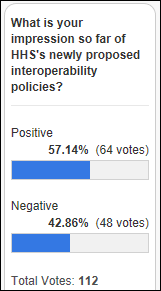

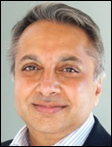

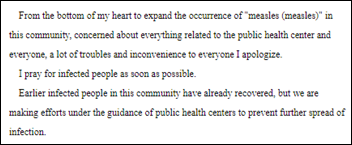





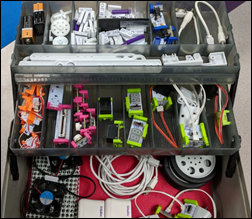




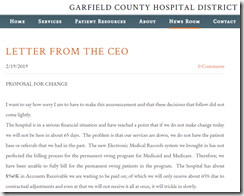

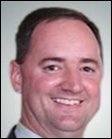

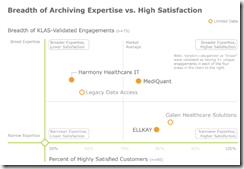
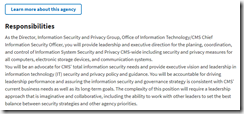









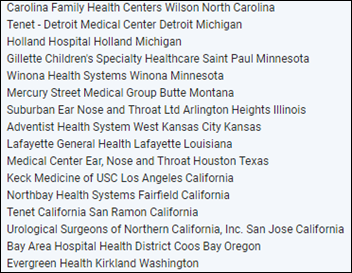



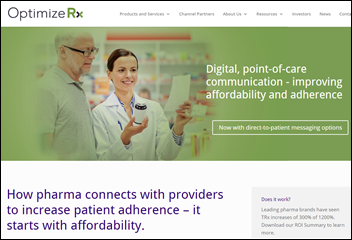


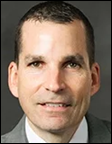

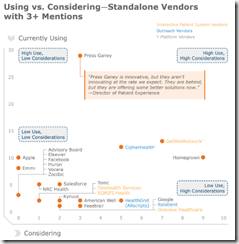
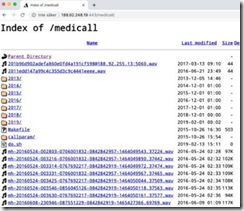



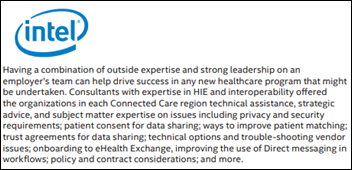
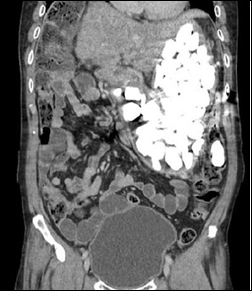

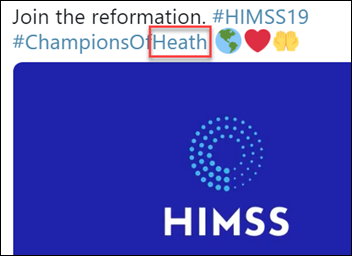

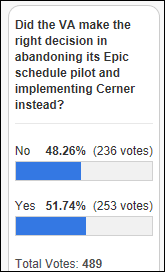

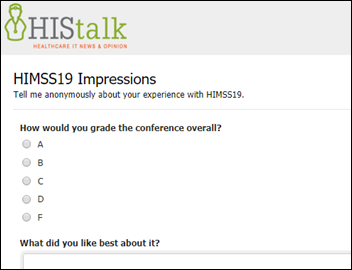

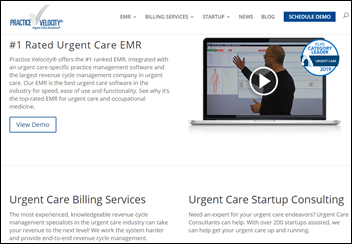
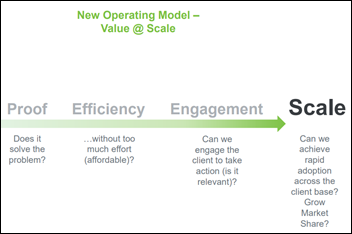


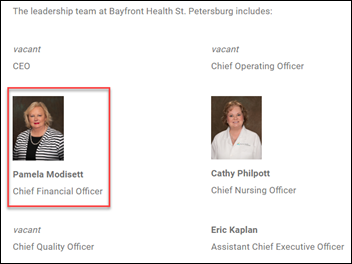
































































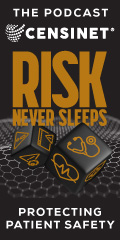


















Would have liked to have seen more about Expanse here. Would like to see more about it on this site…